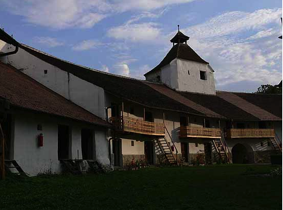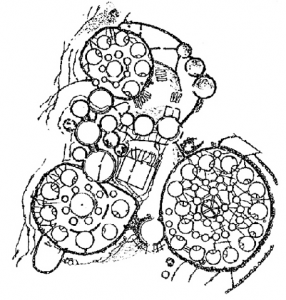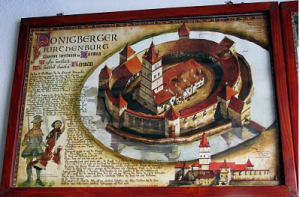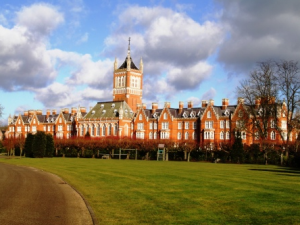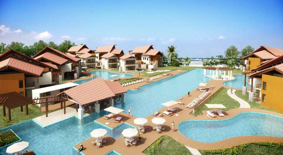Open Cities 19 Gating Openness
Gated communities are the antinomy of openness. The collection of articles in ‘Gated Communities, Social Sustainability in Contemporary and Historical Gated Developments’, edited by Samer Bagaeen and Ola Uduku (Earthscan 2010) has the merit to cover all continents and to be written by authors who, on the whole come from the places they write about. The worrying aspect of this compendium is that gated communities seem to be spreading like wildfires everywhere. Most authors postulate that gated communities are cohesive, at least internally, thus not the bogey phenomenon which conventional wisdom is accusing it of. They argue that gated communities are not confined to the very rich but are found among working class communities as well. Only a few authors are critical of gated communities and consider them anti-urban, undermining the essence of cities as places of encounter and interaction.
Ubiquitous history
Most of the authors are taking a very long range historic perspective in demonstrating that gated communities are not new. Indeed fortified castles, fenced off tribal compounds, walled cities, new compounds in privatised parks behind hedges have formed part of urban structures for a long time.
Conquerors were crashing gates and tearing down walls in warfare, then reinstating new gates and new walls time and again. Less often some of these gates were opened voluntarily and walls were taken down when considered redundant. However, many of these enclosures have become new barriers in cities. Vestiges of gates turned into bottlenecks and moats converted into ring roads, thus leaving traces of division and conflict.
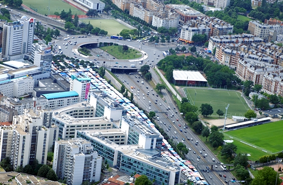
Dia 5 Peripherique where the city wall was located source: www.linternaute.com/…/le-peripherique.shtml
Some of these contested spaces are being transformed into new public realm, aimed to reconnect city cores with newer quarters and to reconfigure cities into coherent urban wholes.
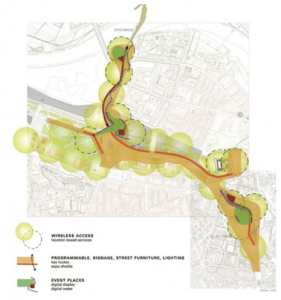
Dia 6 Digital Mile Zaragoza, unites old town, new town and world expo extension source: www.interactivearchitecture.org/zaragoza-digi
When looking for common grounds worldwide, the authors concluded that gated communities are popular because they provide status, exclusiveness, protection from the other, freedom of fear, although they can take many different physical forms.

Dia 7 Blue-Light gated block of flats in a suburb of Pretoria source: bluelightdistrict.org/2006_10_01_archive.ht
They guarantee real estate investment, promote common lifestyles by binding people to behavioural codes, maintenance obligations or cooperation. These latter conditions which may encompass self sufficiency in utilities, roads, waste disposal, include convenience shops, leisure and sports facilities and sometimes schools or other privatised services, especially security guards are considered the constituent pillars of social cohesion within gated communities, although they may give rise to conflicts as some articles show.
Most gated communities create social homogeneity but not necessarily socialisation between those within. Can openness within justify segregation from without in cities? And what are the long term effects of such ‘communities’ which live completely separate lives from each other?
Symbolic references
Some refer to cultural models, such as ‘my home is my castle’. Others praise the merit of courtyard housing with its back to the public realm. But looking inside such gated communities, at whatever scale, it is clear that many of them are not open within either. Gender segregation is reproduced in the physical disposition of a sort of ‘double gated’ community. In contemporary versions, within overall fenced off confines, individual houses or condominiums are gated off separately. Not all areas are accessible to all. Divisive club rules may establish stratified access and user rights. Sometimes they may be purely symbolic, but not less effective for that matter.
It could be argued that such practices may diffuse into cities as a whole. No notices are needed for no go areas, and no locked gates for segregated places where only self-selected groups are congregating.
Alternative spaces of social integration and openness?
With the merits of open cities in mind perhaps the question about the advantages and drawbacks of gated communities should be posed differently. How far does openness reach? How much of it is physical and how much mental openness? Is there any relation between them, akin to what Oscar Newman postulates about the merits of enclosure and its direct relation between physical safety and mental sense of belonging within such physical boundaries?
How much of this does relate to scale, to local culture and customs? And how great is the influence of the dominant North American model of ‘gatedness’, with what material, social and cultural attributes, with what transfer of lifestyle, economic ideology and socio-political values transposed out of context?
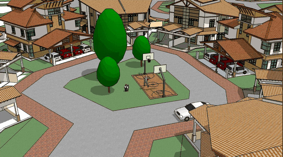
Dia 11 Design of defensible space (Oscar Newman approach) tessellarsociety.blogspot.com/2007/05/protect
Are there gated communities which have the potential to contribute to the openness of cities? The case studies do not provide answers to this question as they are essentially narrative, trying to analyse gated community precedence, rather than critically tackle their longer term consequences for urban living and the ‘raison d’etre’ of cities. Gated communities are becoming the norm everywhere in the urban world. Are there alternatives which would satisfy the aspirations of city dwellers of today and tomorrow?
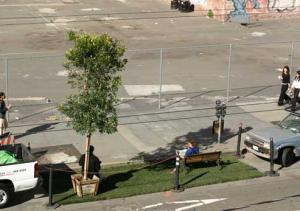
Dia 12 Indeterminate space, alternative openness or ready for gating? temporary public realm in a privatised part of San Francisco criticalspatialpractice.blogspot.com/2006_06_.
See also efforts by ‘no border network’, ‘border activism’ and ‘the borders trilogy’.

